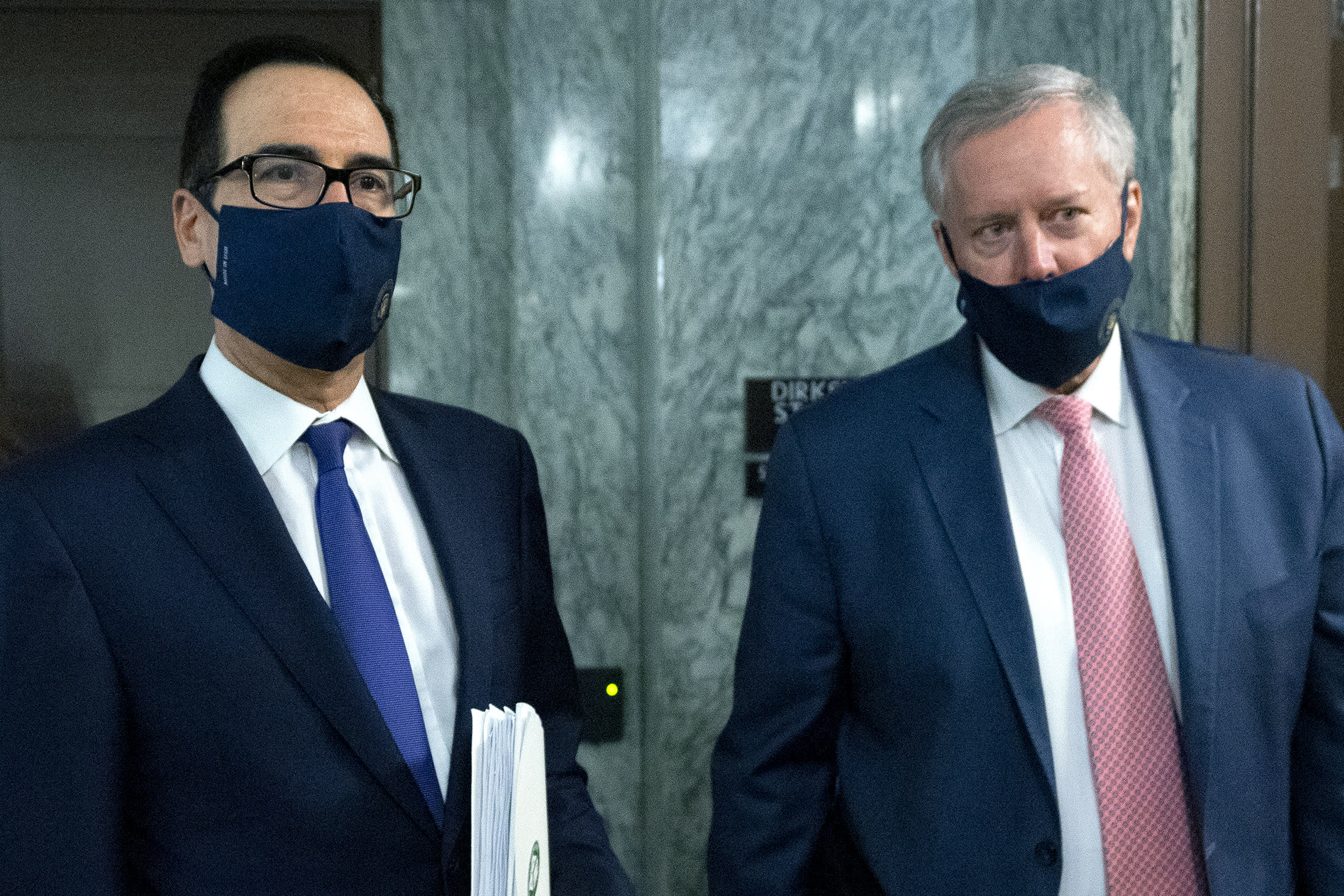Steven Mnuchin, U.S. Treasury secretary, left, and Mark Meadows, White House chief of staff, speak to members of the media after the Senate Republican policy luncheon on Capitol Hill on Tuesday, July 28, 2020.
Stefani Reynolds/Bloomberg via Getty Images
“I was surprised at how low that income threshold was in some states,” said Ernie Tedeschi, an economist at Evercore ISI.
“[At] $55,000, you are not rich,” said Tedeschi, a former Treasury Department official, adding that “that’s pretty solidly middle class” in states with that threshold.
HEALS Act
Then, states would shift to a system whereby combined state and federal benefits would replace 70% of a worker’s prior pay. (For comparison, state aid replaced an average 38% of lost wages in the first quarter of 2020, according to the Labor Department.)
But Republicans would cap the federal supplement at $500 a week. Since states also cap their weekly pay, there would be an upper limit on the amount of aid a worker could get.
The ceiling kicks in fastest for unemployed workers in Mississippi, Arizona, Louisiana, Alabama, Florida and Tennessee.
There, anyone with a salary exceeding $54,600 (Mississippi) to $57,571 (Florida and Tennessee) would make less than 70% of prior pay from unemployment benefits, according to a CNBC analysis.
This is due largely to the less-generous nature of these states’ unemployment systems. Mississippi, Arizona, Louisiana, Alabama, Florida and Tennessee cap their aid at between $200 and $300 a week.
By comparison, other states like New Jersey, Connecticut, Rhode Island, Minnesota and Washington cap their weekly unemployment benefits at between $700 and $800.
It therefore takes a much larger salary in these states to hit the income threshold. Only when one’s salary exceeds $90,000 to $96,000 does their wage-replacement rate start to fall below 70%.
In Massachusetts, which has the highest weekly benefit cap (above $1,200), the salary threshold is nearly $129,000.
Lower earners
Of course, this doesn’t necessarily mean lower earners do well under the Republican plan.
The current $600-a-week policy has disproportionately helped lower earners over higher ones.
For one, lower earners have been more likely than higher earners to lose a job during the pandemic.
The $600 weekly supplement also offered a substantial income boost for these workers.
Consider the average bartender, who makes about $13.50 an hour, according to the Bureau of Labor Statistics.
This person would make just $378 a week from unemployment under Senate Republicans’ 70% plan. However, if this worker were collecting the average state unemployment benefit ($321 a week in May), they would take home about $921 a week via current policy — more than twice the amount of the Republican plan.
Pipe dream?
Of course, this all assumes the 70% plan becomes law — which isn’t a given, since Democrats don’t support the policy.
It also assumes states can implement such a formula, which experts say is more complicated than a flat weekly payment (since it’s individualized for each worker) and would take months to implement.
“It’s a heavy lift for the states to do anything like this,” said Andrew Stettner, a senior fellow at the Century Foundation.
